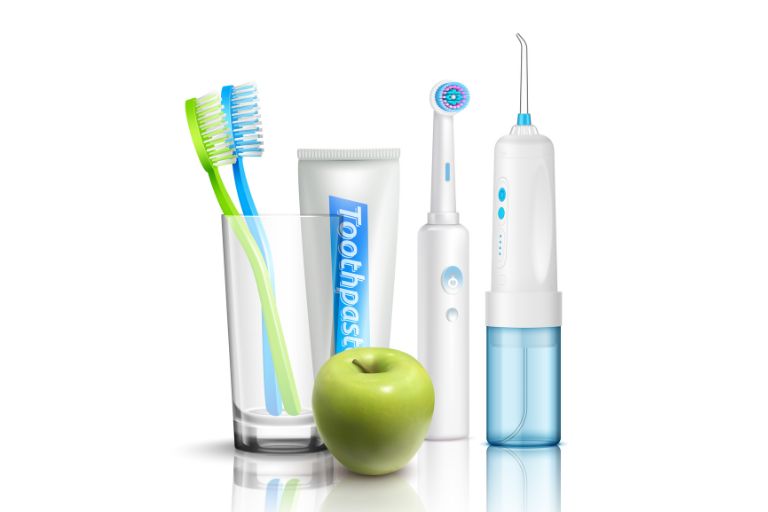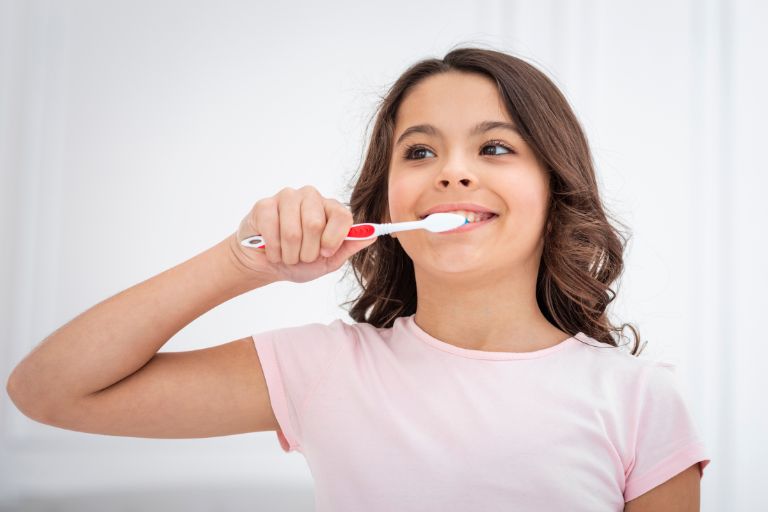Electric toothbrushes, when used correctly can provide a substantially better clean, healthier gums and excellent overall oral health. However, if you floss, use a manual toothbrush correctly, and brush often enough, then you don’t necessarily need an electric brush. There is a large cost differential between the two, but there are also better oral health outcomes with an electric toothbrush.
There are pros and cons to using both an electric or a manual toothbrush including cost, gum and enamel damage, and the dexterity of the user. So how do they compare?
For ease of use
With a manual toothbrush you do the actual work, have to brush correctly, and keep an eye on the time. The electric toothbrush does the work for you. This is great for people with:
- Dexterity issues
- Arthritis
- Braces
- Impaired vision
- Aggressive brushing habits
Children may enjoy using an electric brush over a manual one. However, a manual brush improves a child’s dexterity.
As brushing for two minutes is optimal, a bonus feature of an electric brush is that many come with a built-in timer. Brushing harder so that you don’t have to brush for the full two minutes is not a good idea.
A manual brush doesn’t need to be charged, doesn’t need you to carry a charger when you travel. Not to mention also needing a universal plug if you’re travelling to other countries. A manual brush is also easier to slip into a bag even for a day trip, or a dinner engagement.
Performance
Great oral health is vital not only for the longevity of your teeth, but also for your overall health. So, you want the best results out of the toothbrush you use, right? The results of both an electric or a manual toothbrush depends entirely on the quality of your technique. With both brushes, too much pressure can damage the enamel of your teeth. It can also cause gum damage. Some electric brushes have built in pressure sensors to prevent that.
Irrespective of whether you’re using an electric or manual brush, the best option is always soft bristles. Only a dental hygienist can completely and safely remove all the plaque on your teeth. But an electric toothbrush does go a long way to minimizing the accumulation of plaque. In fact, they remove 21% more plaque than a manual brush, thanks to their oscillating, spinning, or sonic vibrations. As a result, they reduce gum inflammation by 11%.
Cost
There is no denying that an electric toothbrush is considerably more expensive than a manual one. The manual brush should be replaced every 3 months. The electric brush heads should also be replaced every 3 months. However, the electric brush often comes with optional heads to allow you to reach places in your mouth that a manual brush can’t access as well. While the electric brush is more expensive, using one correctly will reduce your dental fees down the road.
Is your oral health as good as it could be? Do you suffer from recurring gingivitis, bad breath, and receding gums no matter how often you brush your teeth? Are you sure you’re brushing correctly?
If you have any about your brushing technique and the best toothbrush selection for you, contact us on 0508 TEAM DENTAL and make an appointment today to discuss this in more detail.
FAQs:
Q1: Is an electric toothbrush better than a manual toothbrush?
An electric toothbrush can remove up to 21% more plaque and reduce gum inflammation compared to a manual toothbrush. However, with proper brushing technique and regular flossing, a manual toothbrush can still provide excellent oral health.
Q2: How often should I replace my toothbrush or brush head?
Both manual toothbrushes and electric brush heads should be replaced every 3 months, or sooner if the bristles are frayed. Regular replacement helps maintain effective cleaning and protects your teeth and gums.

